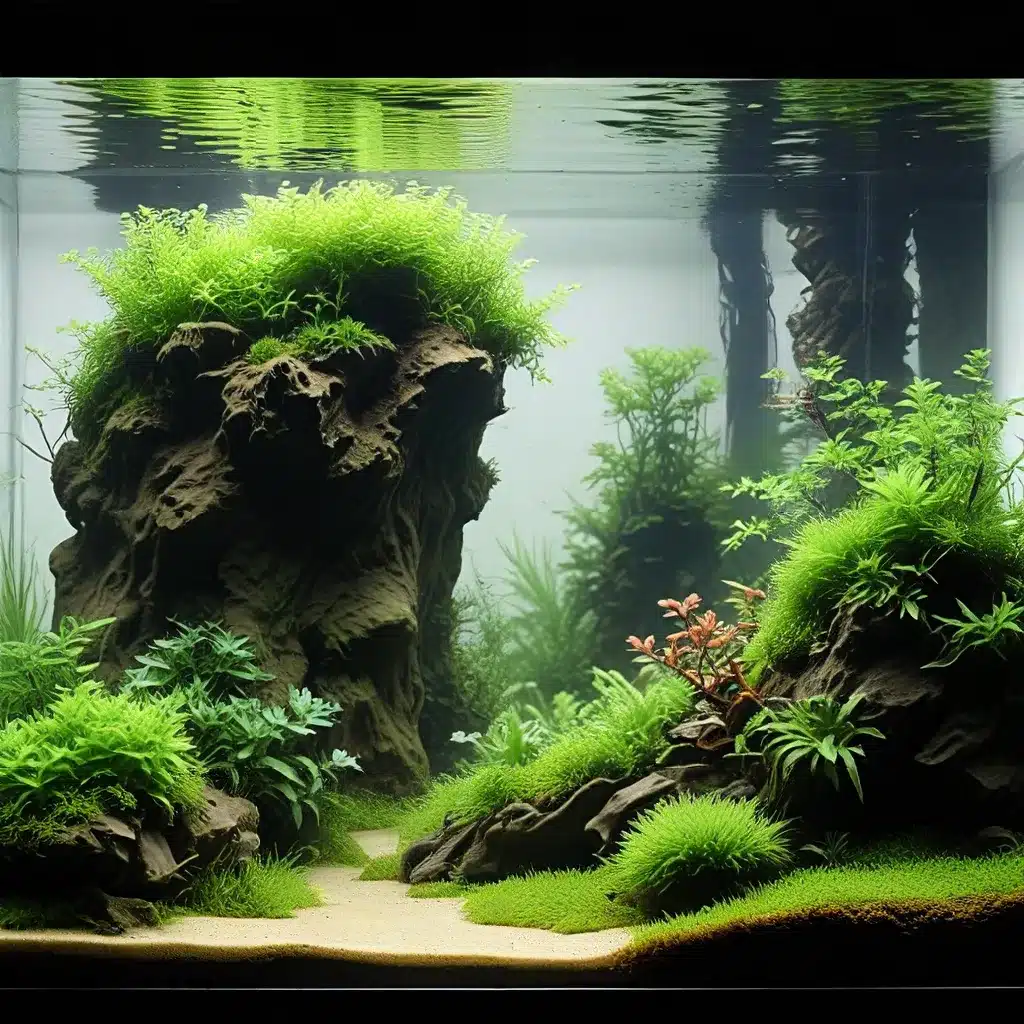
Aquascaping, the art of creating visually stunning and ecologically balanced aquatic gardens, has captivated the hearts and minds of aquarium enthusiasts worldwide. Whether you’re a seasoned aquarist or just starting your journey into the vibrant world of aquatic horticulture, this comprehensive guide will equip you with the knowledge and techniques to transform your underwater haven into a true masterpiece.
Laying the Foundation: Understanding Aquascaping Principles
At the core of aquascaping lies a fundamental understanding of the natural world beneath the surface. Aquascapers draw inspiration from the intricate balance and beauty found in nature, translating these elements into meticulously designed layouts that not only enchant the eye but also provide a thriving environment for aquatic life. By mastering the principles of aquascaping, you’ll be able to create visually striking displays that seamlessly blend form and function.
One of the key principles of aquascaping is the concept of negative space. This strategic use of empty areas within the aquarium layout serves to accentuate the focal points and create a sense of depth and balance. Skillfully incorporating negative space can draw the viewer’s eye to the most captivating features of your aquascape, whether it’s a towering driftwood structure or a vibrant carpet of lush vegetation.
Selecting the Right Aquarium and Equipment
The foundation of a successful aquascape begins with the right aquarium and supporting equipment. When choosing an aquarium, consider factors such as size, shape, and material. Taller tanks can create a more dramatic sense of depth, while wider tanks may be better suited for larger, sprawling layouts. The type of glass or acrylic used can also affect the overall aesthetic and durability of your aquarium.
In addition to the tank itself, the choice of filtration system, lighting, and substrate play a crucial role in the health and appearance of your aquascape. Investing in high-quality, energy-efficient equipment not only ensures the well-being of your aquatic inhabitants but also allows you to fine-tune the visual elements of your underwater garden.
Mastering Aquatic Plant Selection and Placement
The heart of any captivating aquascape lies in the thoughtful selection and placement of aquatic plants. From towering stems to lush carpets, each plant species offers unique characteristics that can be leveraged to create depth, texture, and visual interest. When curating your plant selection, consider factors such as growth rate, leaf shape, and color to achieve a harmonious and balanced composition.
One of the most crucial aspects of plant placement is the concept of layering. By strategically positioning taller plants in the background and smaller, ground-covering species in the foreground, you can create a sense of depth and dimension within your aquascape. This technique not only enhances the visual appeal but also provides ample hiding spots and territories for your aquatic inhabitants.
Integrating Hardscape Elements
Hardscape elements, such as rocks, driftwood, and decorative structures, play a pivotal role in shaping the overall aesthetic of your aquascape. These non-living components can be used to create focal points, define pathways, and establish a sense of natural flow within the aquarium. When selecting and arranging hardscape elements, pay close attention to their size, texture, and positioning to ensure they complement the overall layout and enhance the aquatic ecosystem.
One popular hardscape technique is the use of iwagumi-style layouts, which emphasize the strategic placement of carefully selected rocks to create a minimalist, Japanese-inspired aesthetic. This approach often features a central, dominant rock formation surrounded by smaller, supporting rocks, creating a visually captivating and harmonious composition.
Maintaining a Thriving Aquascape
Achieving a thriving and visually stunning aquascape requires ongoing maintenance and attention. Regular water changes, pruning of aquatic plants, and monitoring of water parameters are essential to ensure the long-term health and stability of your underwater garden.
Proper nutrient management, through the use of fertilizers and carbon-dioxide (CO2) systems, can also play a crucial role in the growth and appearance of your aquatic plants. By carefully balancing these elements, you can promote the lush, vibrant foliage that is the hallmark of a well-maintained aquascape.
Additionally, incorporating natural water flow and circulation within your aquarium can help maintain water quality, prevent the buildup of debris, and encourage the healthy growth of your aquatic inhabitants. Strategically placed power heads or circulation pumps can be used to create a natural-looking current that mimics the movement found in natural aquatic ecosystems.
Bringing Your Aquascape to Life
As you venture into the captivating world of aquascaping, remember that the journey is as rewarding as the destination. Embrace the process of experimentation, creativity, and a deep appreciation for the natural wonders that lie beneath the surface. By immersing yourself in the art of aquascaping, you’ll not only create a visually stunning centerpiece for your home or office but also foster a thriving, self-sustaining ecosystem that brings joy and tranquility to your daily life.
To dive deeper into the realm of aquascaping, explore the vast resources available online, such as the r/Aquascape subreddit, a vibrant community dedicated to sharing knowledge, inspiration, and the latest advancements in the field. Additionally, consider visiting your local King Aquarium store, where knowledgeable staff can provide personalized guidance and assist you in curating the perfect aquarium setup for your unique vision.
Remember, the true beauty of aquascaping lies not only in the final result but also in the journey of discovery, experimentation, and the deep appreciation for the delicate balance of the aquatic world. Embrace the challenges, celebrate your successes, and let your aquascape be a testament to your passion and dedication as an aquarist.

